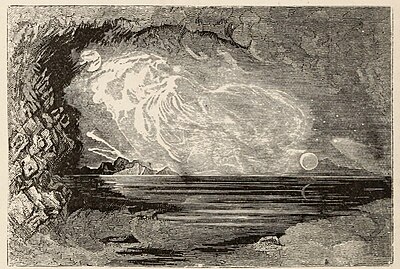ing in wood bears date of 1794, and was from the hand of Dr. Alexander Anderson (1775–1870), a physician by profession, but with a natural bent toward the art, which he had played at from boyhood, and finally made the principal business of his life. The sight of some of Bewick’s early

Fig. 75.—The Creation. Engraved by J. F. Adams.
work had determined him to employ wood as a material in place of the type-metal on which he had previously engraved in relief, and the example of Bewick taught him to use white line. At that time, and for many years afterward, the art was applied mainly to the production of cuts for advertisements, labels, and the like, as a servant of trade; its use for illustration simply was confined almost wholly to juvenile books. The engravers who at the beginning of the century introduced the art in New York, Boston, Philadelphia, Baltimore, and New Haven were few, and, for the most part, self-taught; usually they merely copied English cuts, and thus
